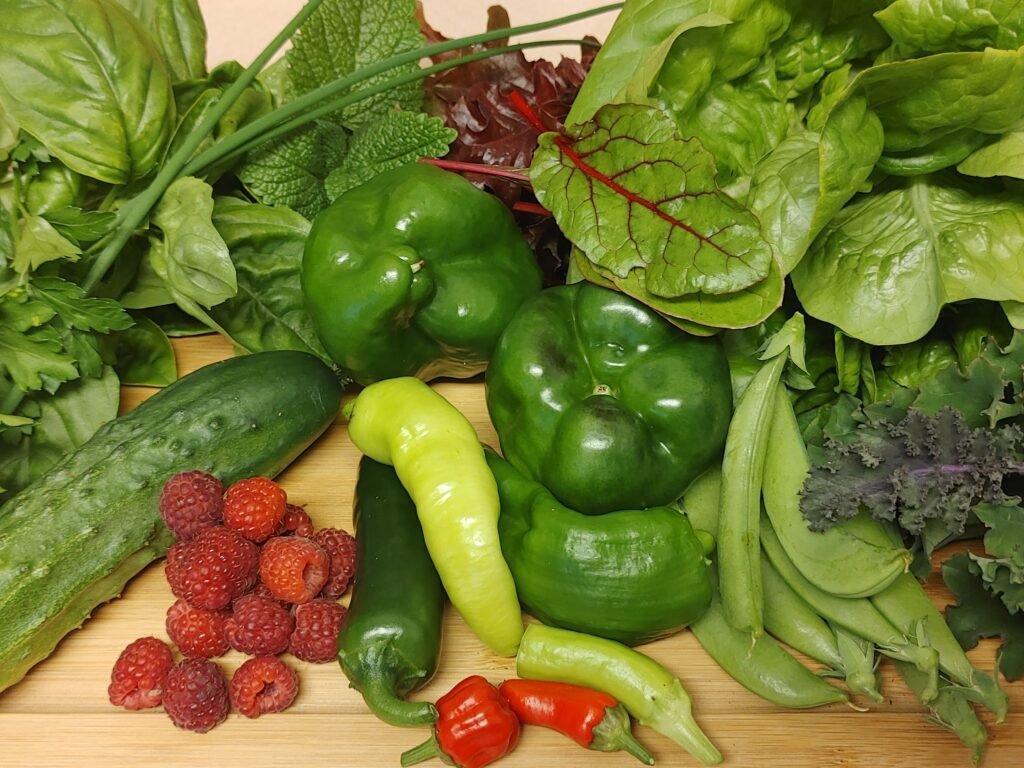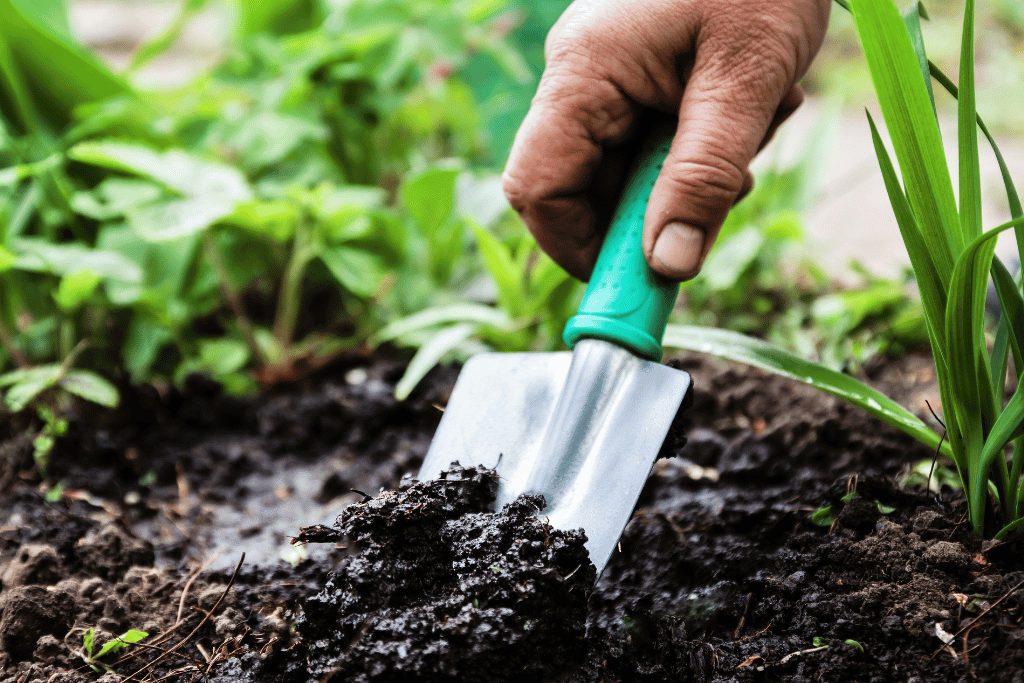
Gardeners across the world have a knack for growing Tomato plants due to their vibrant red fruit and delectable taste. News flash! – There are some weeds that look like Tomato plants! Therefore, It is important to be able to identify the difference between Tomatoes and weeds so your harvest isn’t ruined. And let me tell you, I’ve been fooled by some of these imposters in the past, but I’ve learned my lesson the hard way!
When I heard about weeds disguised as Tomato plants, my curiosity piqued. To my surprise, some of these were so realistic they even tricked me!
I’m passionate about passing on my knowledge to aid other gardeners in their own journeys. That’s why it fills me with joy to share what I know and the lessons that I’ve learned, so others won’t have to make the same mistakes!
So, are you ready to dive into the world of weeds that look like Tomato plants? Let’s begin:
What Does a Tomato Plant Look Like?
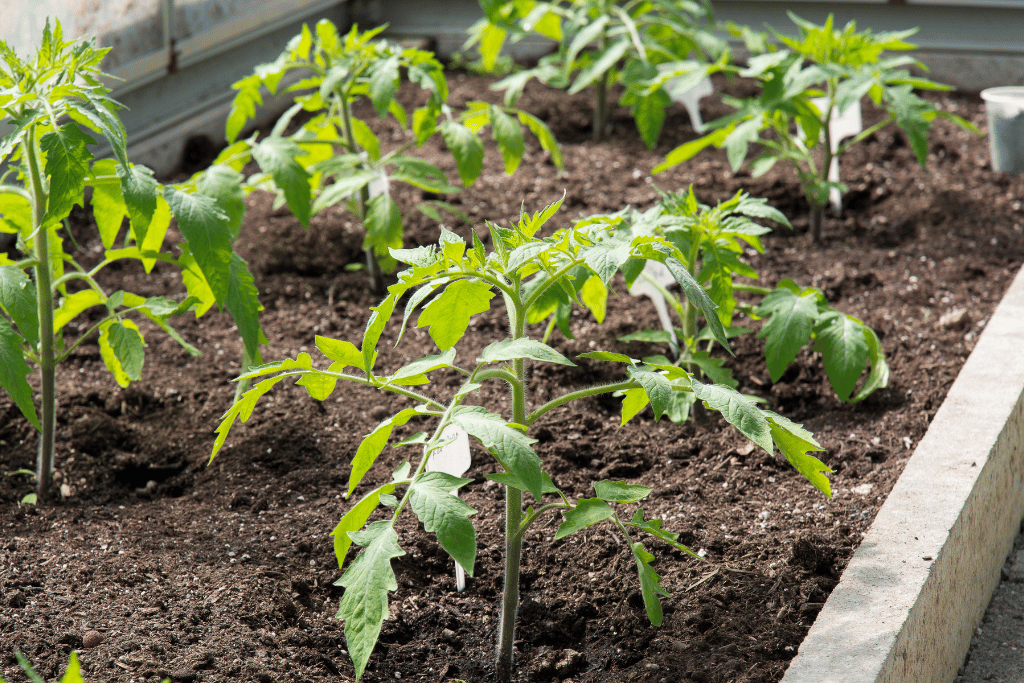
The Tomato plant is a vibrant, annual climber in the Solanaceae family that hails from South and Central America. This bountiful plant has been grown globally for its succulent fruits that can be savored raw or cooked – a true testament to its versatility!
It features a sturdy, central stem which can extend up to one meter long with elongated internodes between the leaves. This main stem is buttressed by an extensive, shallow root system and at each leaf base consists of two potential axillary buds that generate flowers and eventually bear Tomatoes. The leaves appear large (between 4 – 10 inches), dark green ovate shapes boasting serrated edges.
In as little as a month after planting, beautiful yellow star-shaped flowers with five petals each will begin to appear in the leaf axils near the base of the stem. Bees and other pollinators are essential for setting these blooms which can facilitate quicker fruit production.
Tomatoes start off as a vibrant green and mature to a deep red. These fruits are substantial, stretching up to 4 inches in diameter and weighing an incredible 2-3 ounces each! The inside is filled with delicious juices that surround the small yellow seeds.
Note that thriving Tomato plants and quality fruit production depend on an adequate amount of sunshine, temperatures between 70-85°F, regular watering, and fertilizing for optimal growth.
The Tomato plant is an absolute must-have for any garden! Its lush foliage and delicious fruits can be added to your favorite recipes, adding a burst of flavor with every bite. Incorporating this multi-purpose crop into your outdoor space will surely bring you plenty of joy.
Are There Weeds That Look Like Tomato Plants?

You may stumble across several weeds in the garden that look eerily similar to Tomato plants, however they can be distinguished by their flowers and leaves. A few of these include common purslane, black nightshade, hairy nightshade, jimsonweed, spurge, scarlet pimpernel, hogweed pigweed and red soda apple.
It cannot be overemphasized how important it is to wear protective gloves when dealing with any kind of weed–some are toxic if ingested or cause skin irritation upon contact without safety gear!
10 Weeds That Look Like Tomato Plants
Tomato plants are beloved by vegetable gardeners, but they can be easily confused with other weeds. Here are 10 of the most common weeds that can look like Tomato plants and how to tell them apart.
1. Deadly nightshade:
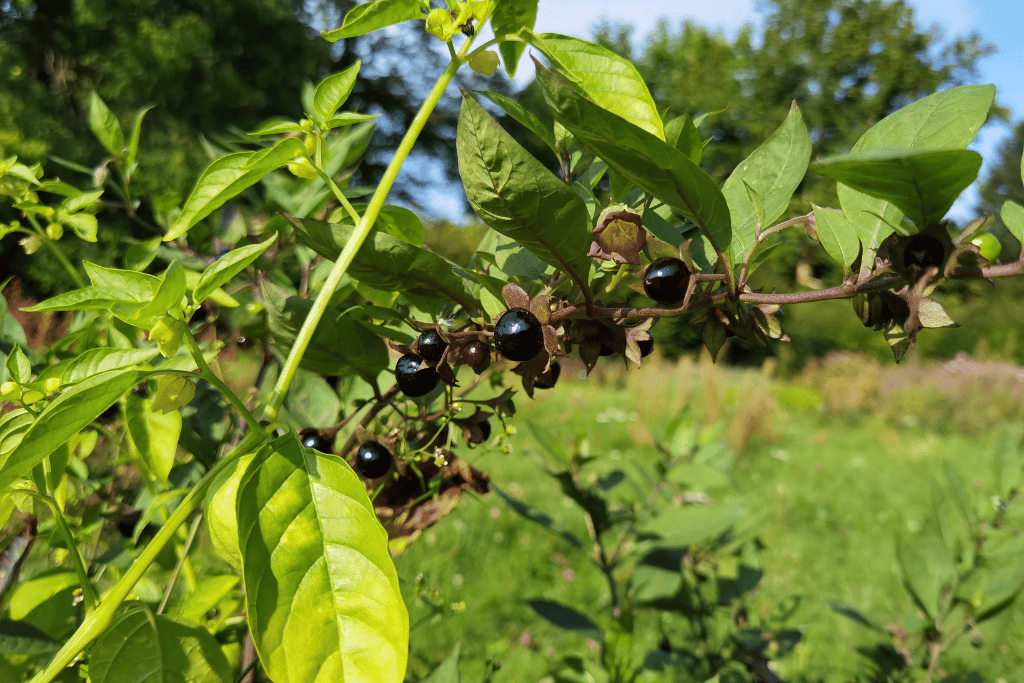
Although it looks similar to a common Tomato plant, the deadly nightshade is actually part of the Solanaceae family – which includes tomatoes, potatoes and peppers – but should never be eaten due to its highly toxic levels. Also called Belladonna, this plant that looks like Tomato has distinct features including bright green leaves and small purple flowers that may be mistaken for an edible variety. However, caution must always remain top-of-mind when identifying this weed as even touching it can cause serious health implications.
2. Common purslane or hogweed:
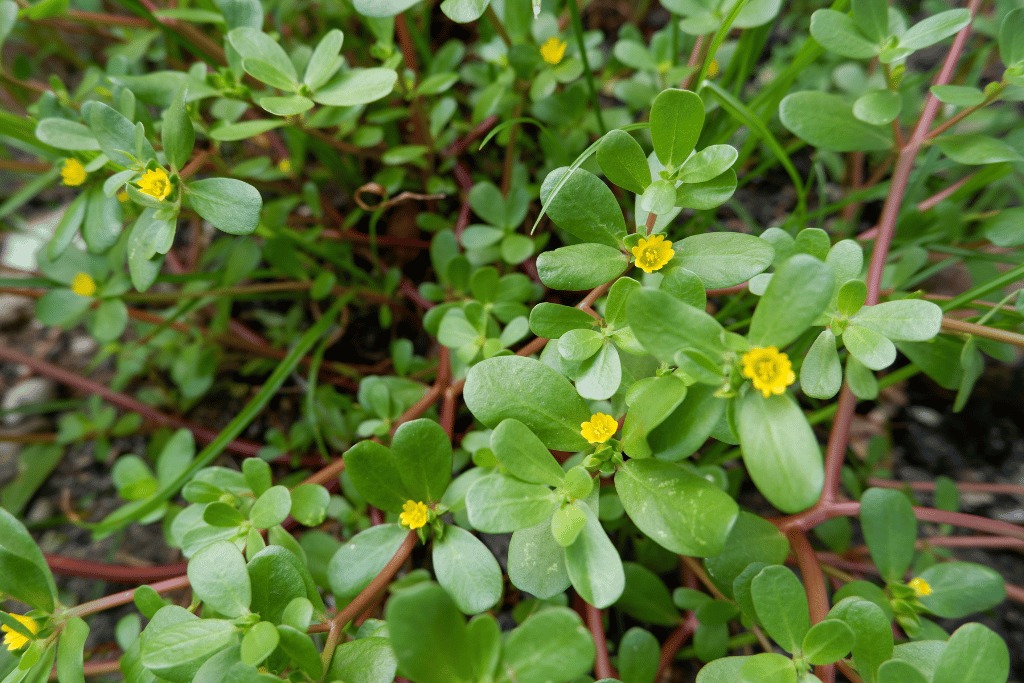
The hogweed is a hazardous plant with immense, green leaves and petite white flowers blooming at the apex of its stalks. It is frequently mistaken for a Tomato vine, particularly before blooms appear. Nevertheless, this weed has an upright growth pattern that distinguishes it from the typical shrubby form of Tomato plants. Ensure to never touch this plant without gloves as its sap can lead to skin inflammation and considerable blistering!
3. Black nightshade:
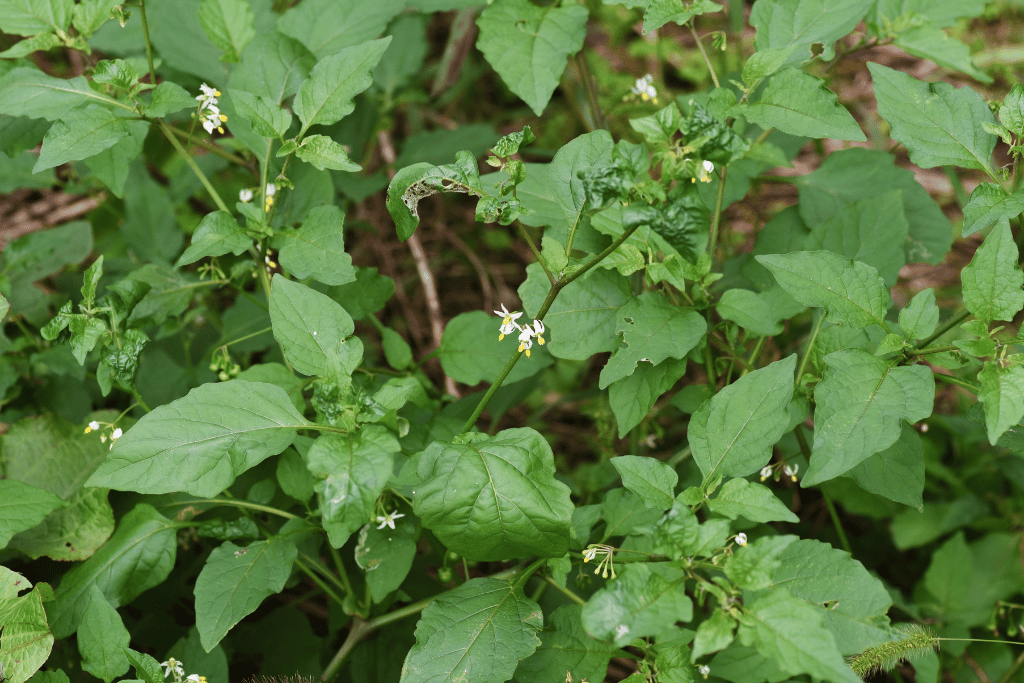
The black nightshade stands out from other plants with its unique purple flowers and large, Tomato-like green leaves. Though it is not as toxic as the deadly nightshade of the Solanaceae family when ingested, you should still avoid this weed in order to be on the safe side!
4. Hairy nightshade:
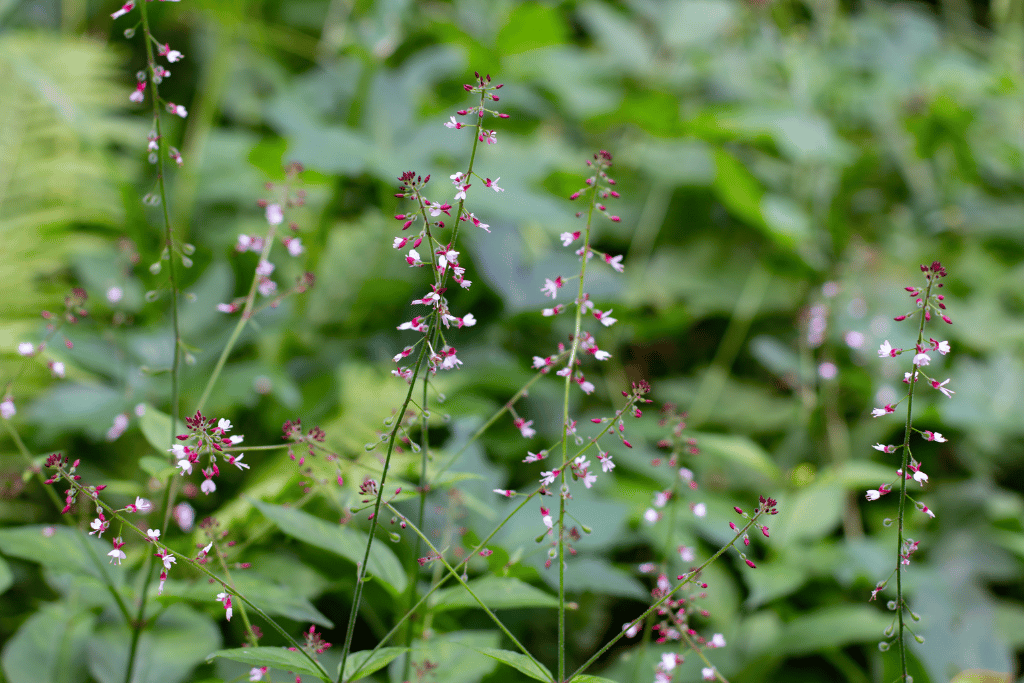
At first glance, the hairy nightshade and its Tomato plant look-alike can be hard to differentiate; however, this weed is easily recognizable with its covering of small white hairs on both stems and leaves. Take caution when handling or managing it though – contact could result in skin irritation! Therefore, it’s critical to wear protective gear before engaging with the hairy nightshade for your safety.
5. Jimsonweed:
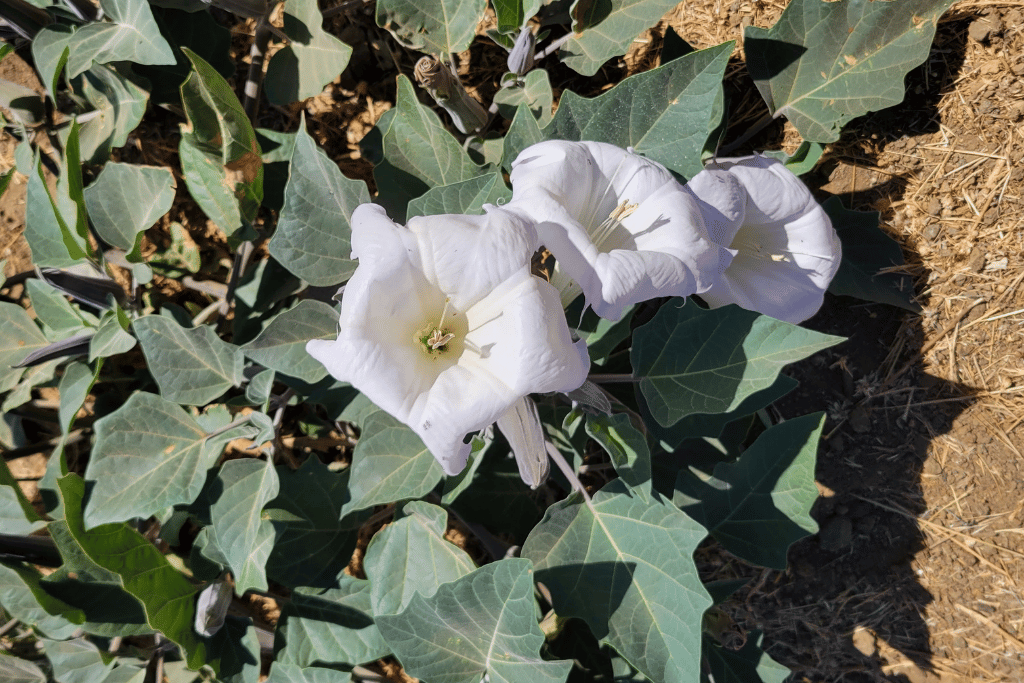
Jimsonweed can easily be mistaken for a Tomato plant, as both share the same large green leaves and trumpet-shaped flowers in white or purple. But, further inspection reveals clear distinctions between them: Jimsonweed’s coarser foliage and larger, more distinct flower shape make it stand apart from its lookalike counterpart.
6. Spurge:
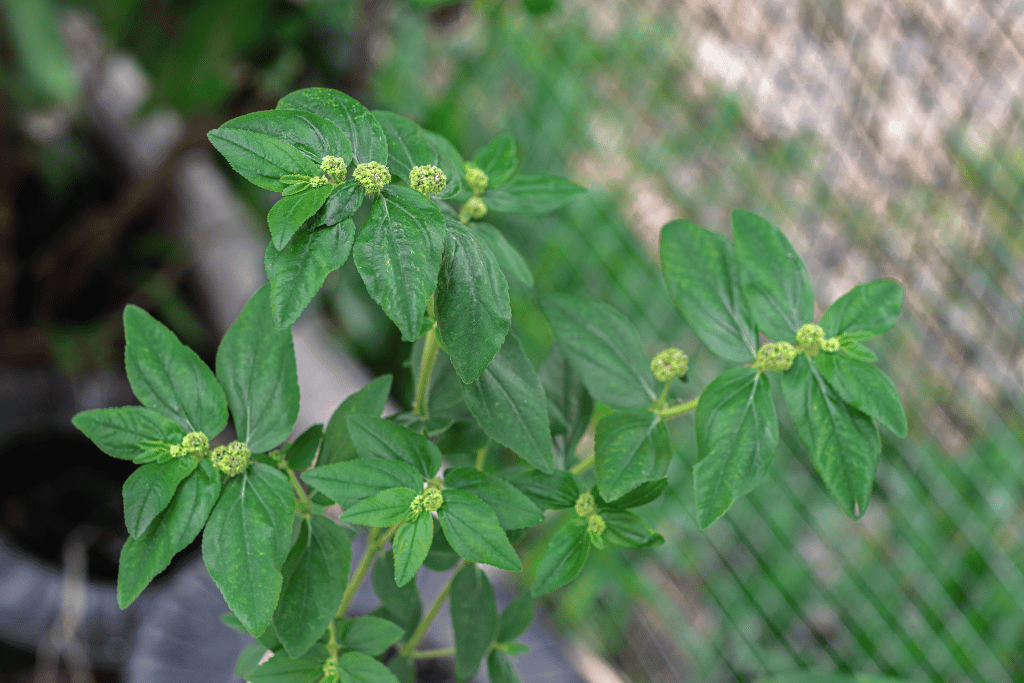
The spurge is a deceptively innocuous weed that can be easily mistaken for Tomato plants due to its verdant leaves and lively yellow flowers, growing atop long stems. Nevertheless, the sap of this noxious plant has skin irritating properties; so whenever you come across it, make sure you have gloves on hand as protection.
7. Scarlet pimpernel:
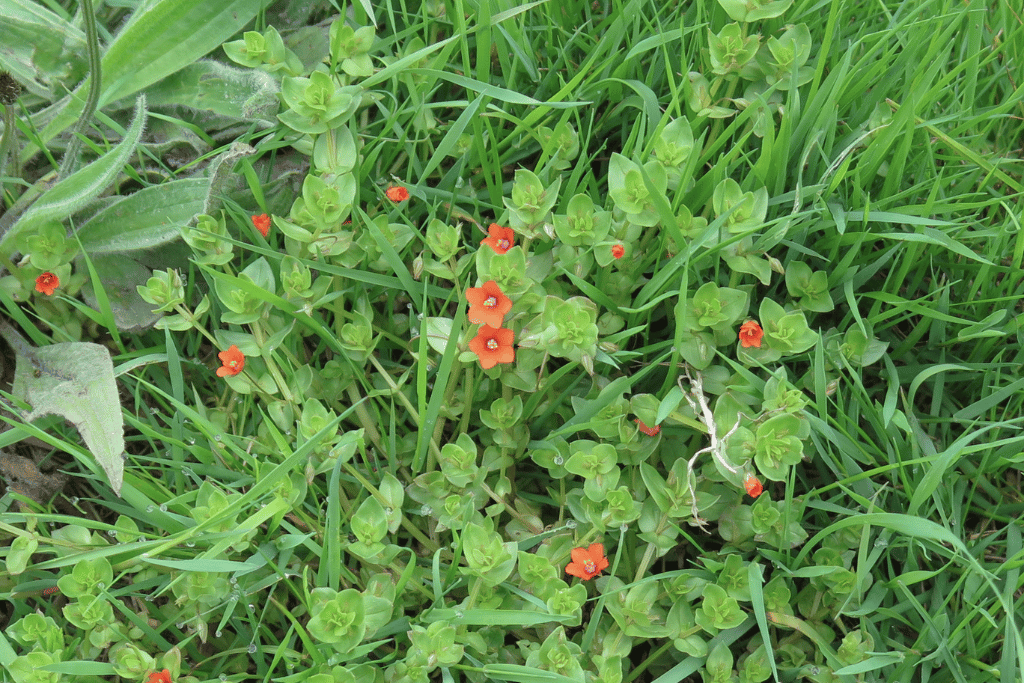
Distinguishable by its bright red flowers, the scarlet pimpernel weed is easy to spot. And even easier to tell from Tomatoes – this plant has wider leaves! Unfortunately, it isn’t edible due to being highly toxic.
10. Red soda apple:
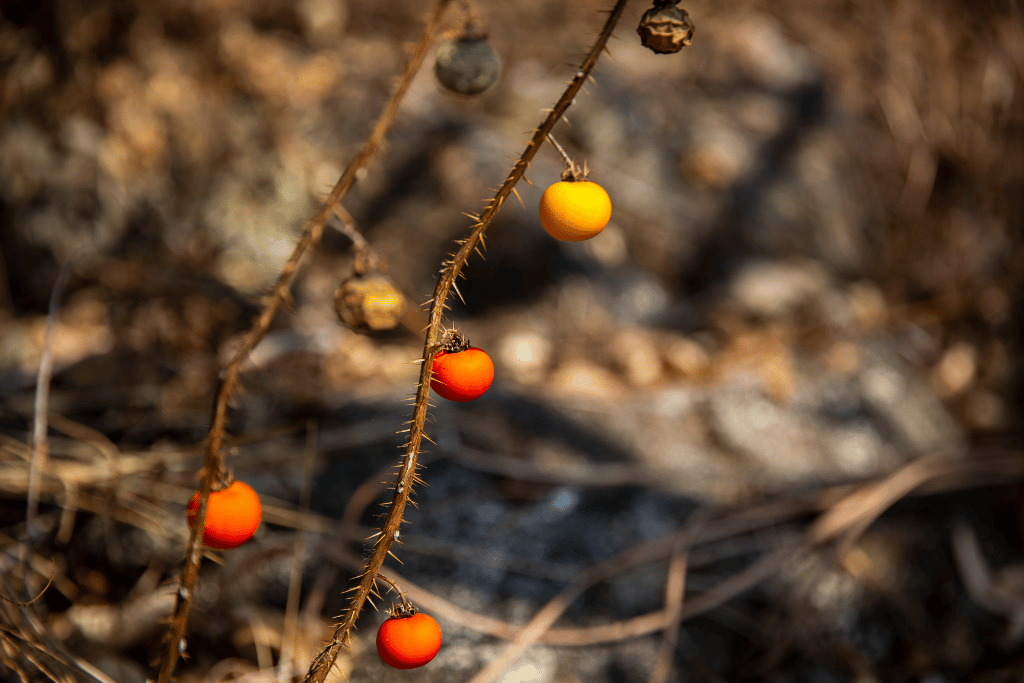
The distinctive red soda apple is a weed that looks much like the Tomato plant. Its vivid, ruby-hued petals and lengthy, elongated foliage make it easy to spot in any garden. This one too, is toxic and should not be eaten.
To protect ourselves from inadvertently consuming something toxic, it’s essential to identify the difference between weeds and Tomato plants simply by their blossoms and foliage. Even with this knowledge though, don’t let your guard down – when dealing with any kind of weed make sure to wear protective gloves as they could lead to skin discomfort or even more serious repercussions if handled carelessly!
Are There Plants That Look Like Cherry Tomato?
Yes, there are a few plants that can look similar to cherry Tomatoes. They are:
Horsenettle:
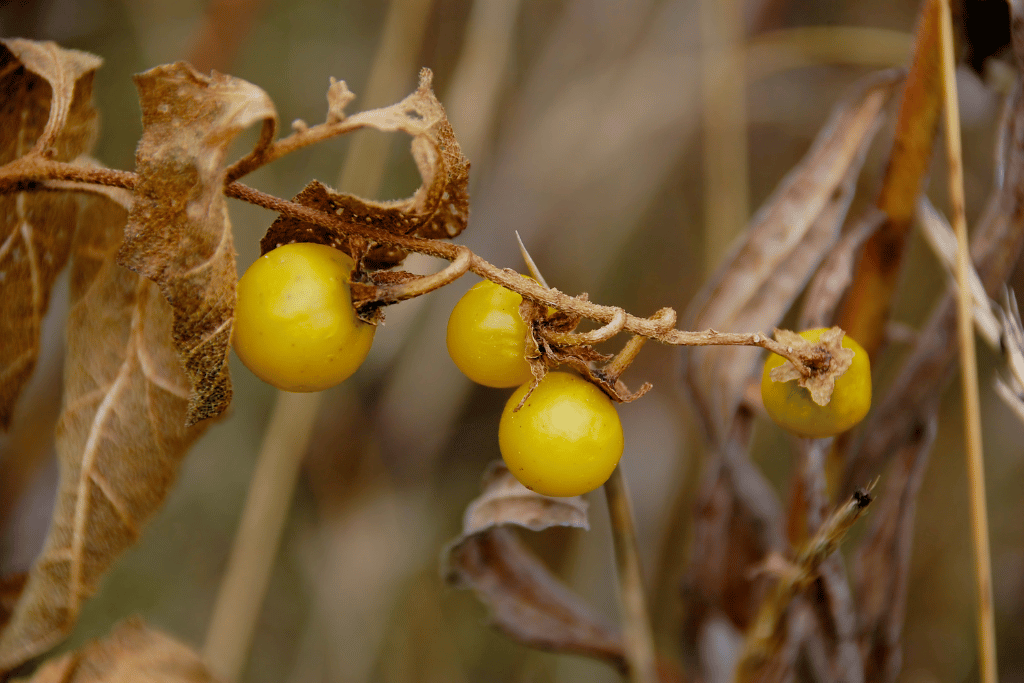
Beware of this plant! Its spines are dangerous and can easily irritate your skin, causing serious pain. The leaves of this weed have an egg-like shape with a wrinkled texture that resembles cherry Tomatoes. In the summer months, it produces small yellow flowers to finish off its menacing look.
Ragweed:
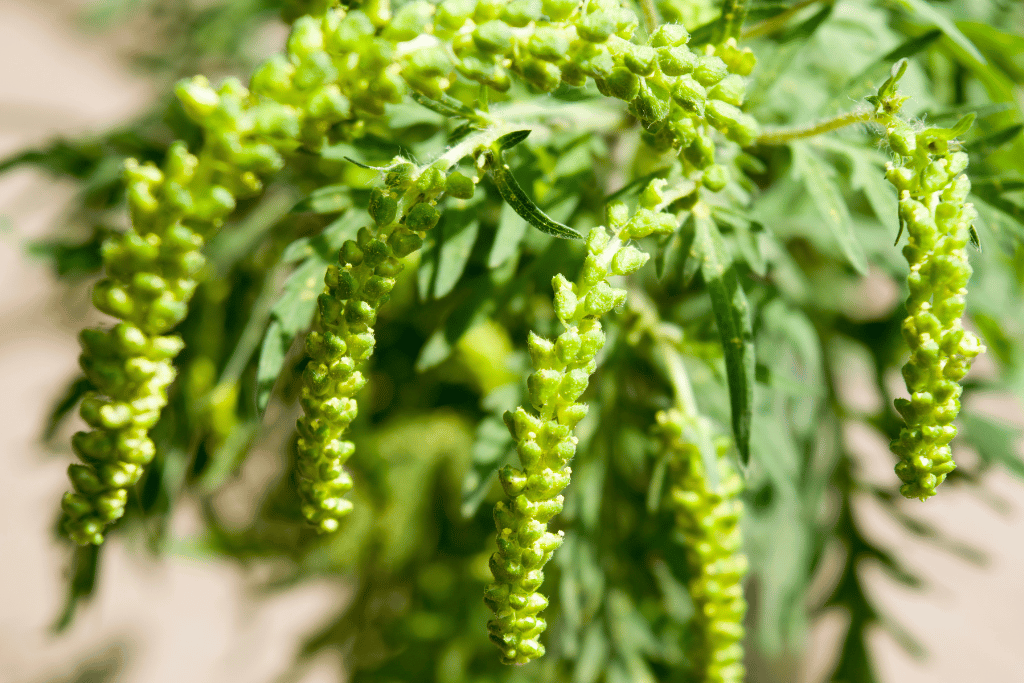
This persistent weed, with foliage resembling little cherry Tomatoes, has greenish-yellow flowers that bloom in the summer. Furthermore, it can be highly annoying with its scattering of seeds across your garden.
Ground ivy:
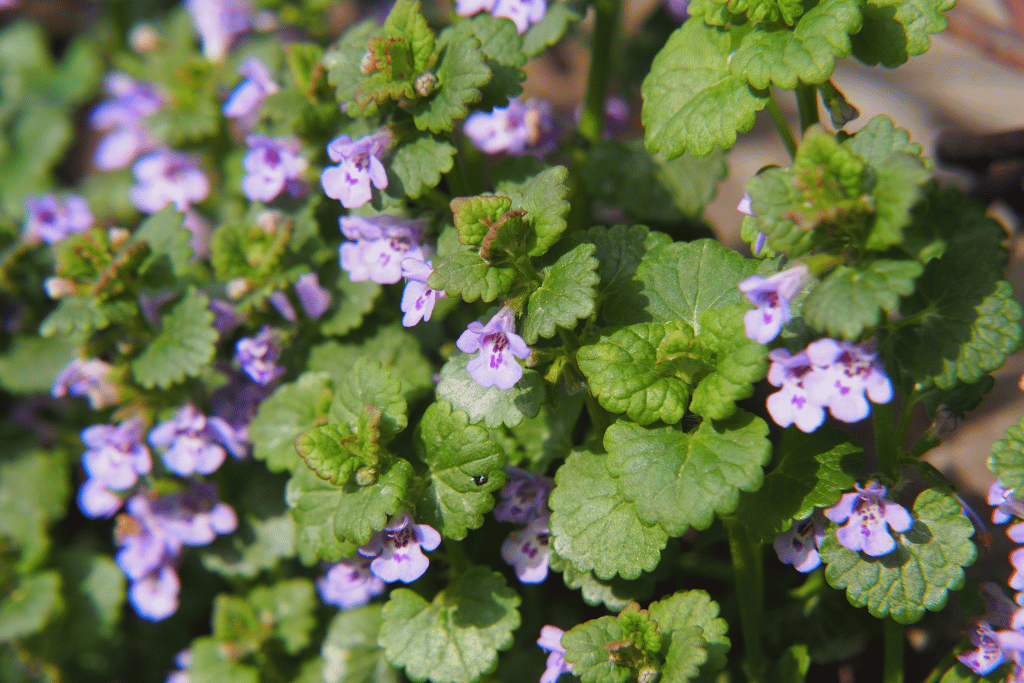
This hardy weed has glossy green leaves with the same scalloped edges as cherry Tomatoes. Additionally, it produces vibrant purple-blue flowers and emits an uplifting minty scent.
Ground cherry:
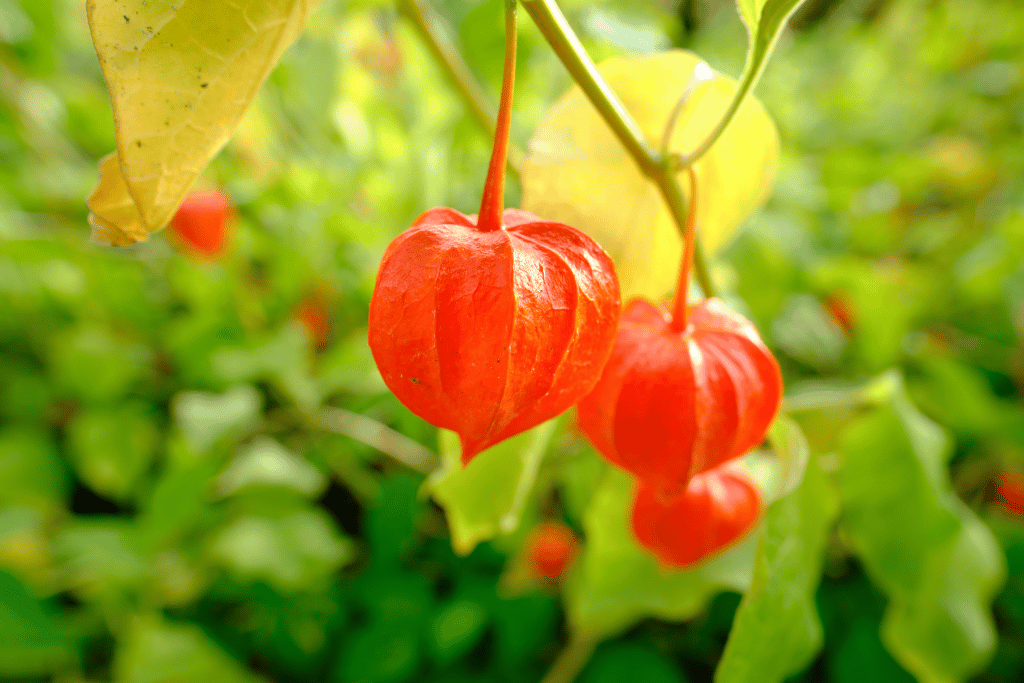
Belonging to the husk Tomato family, the intriguing ground cherry displays yellow blossoms and delightful cherry-like fruits resembling Tomatoes. It may appear appetizing as a snack, yet these are not safe for consumption until they have reached their full maturity; both leaves and stems of this plant contain toxins that can be hazardous to health.
Litchi tomato:
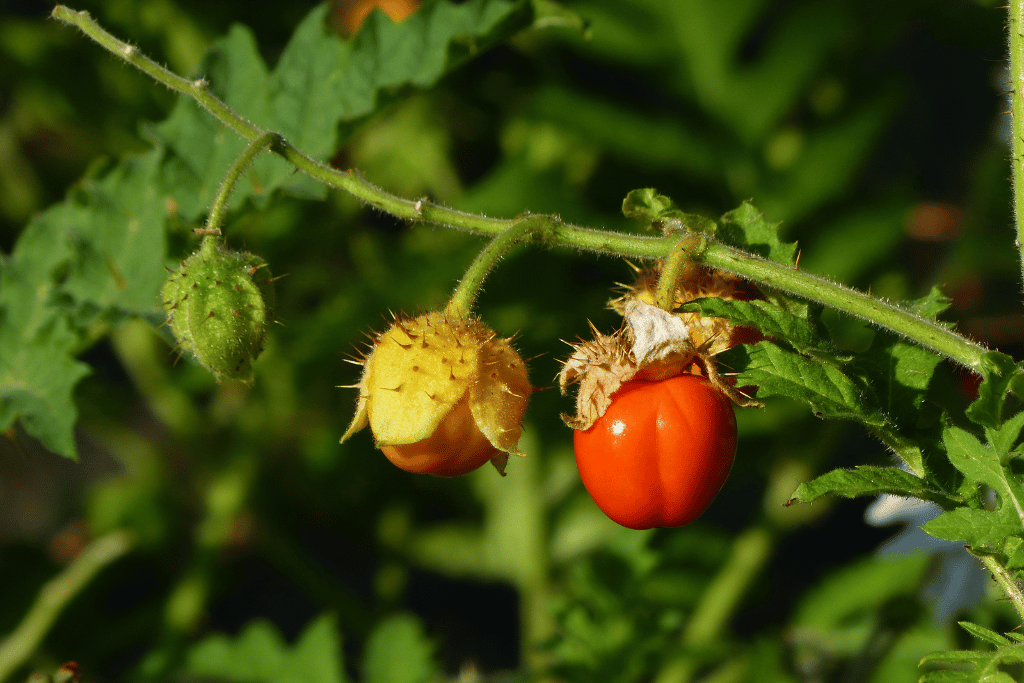
Deceptive in its appearance, the litchi Tomato plant is often mistaken for a cherry Tomato. Resembling the latter’s small yellow flowers, it produces fruit that looks similar to cherry Tomatoes but isn’t suitable for consumption. Additionally, its leaves are frequently lobed or toothed and covered with glands that have sticky hairs; when touched these can cause skin irritation.
How to Spot Garden Weeds That Look Like Tomato Plants?
When tending to your garden, it can be challenging to distinguish between the plants you want and those pesky weeds that don’t belong. Weeds often resemble vegetables such as Tomatoes, making them hard to detect by eye. To make identifying these plants easier, here are a few helpful tips on how to tell the difference between Tomato plants and weeds!
When it comes to sowing your garden in a square foot grid, you’ll have no trouble discerning which plants are weeds and Tomatoes because the majority of seeds will take root and sprout. The Tomato plants’ growth pattern is considerably distinct from that of their weeds, allowing for easy identification.
Conversely, if the garden is planted without any specific arrangement, it can be hard to differentiate between desirable plants and weeds. In this situation, patience is key – you’ll need to wait for everything to manifest before assessing each plant with a keen eye.
Carefully inspecting the size, shape and color of various plants is key to determining which are weeds and which are Tomatoes. To make it even easier to identify Tomato plants, look for unique features like their distinct leaves or small yellow flowers – characteristics that you won’t find on most other types of vegetation.
Conclusion
If you are growing Tomato plants in your garden, it is important to know the difference between weeds and Tomatoes. Taking the time to recognize these weeds that look like Tomato plants and removing them will ensure that your Tomato plants have the chance to thrive without having to compete with invasive plants.


